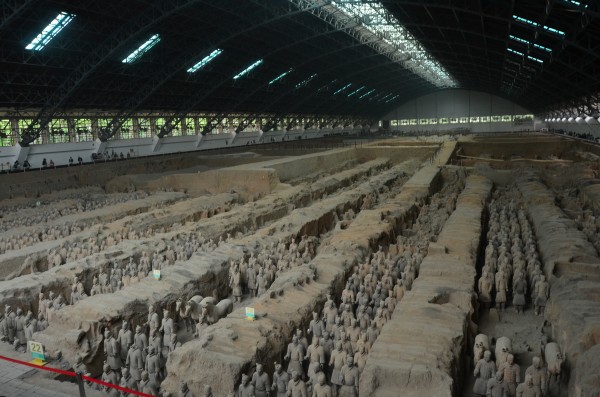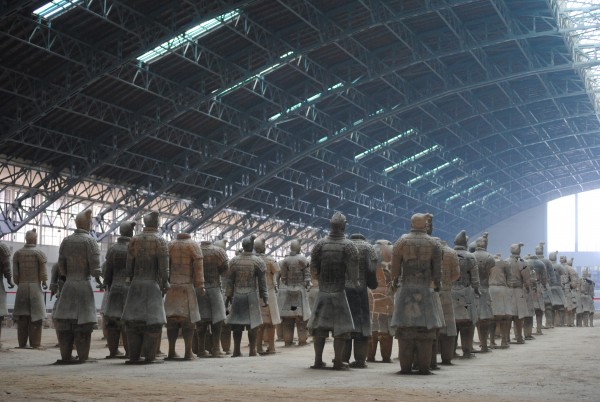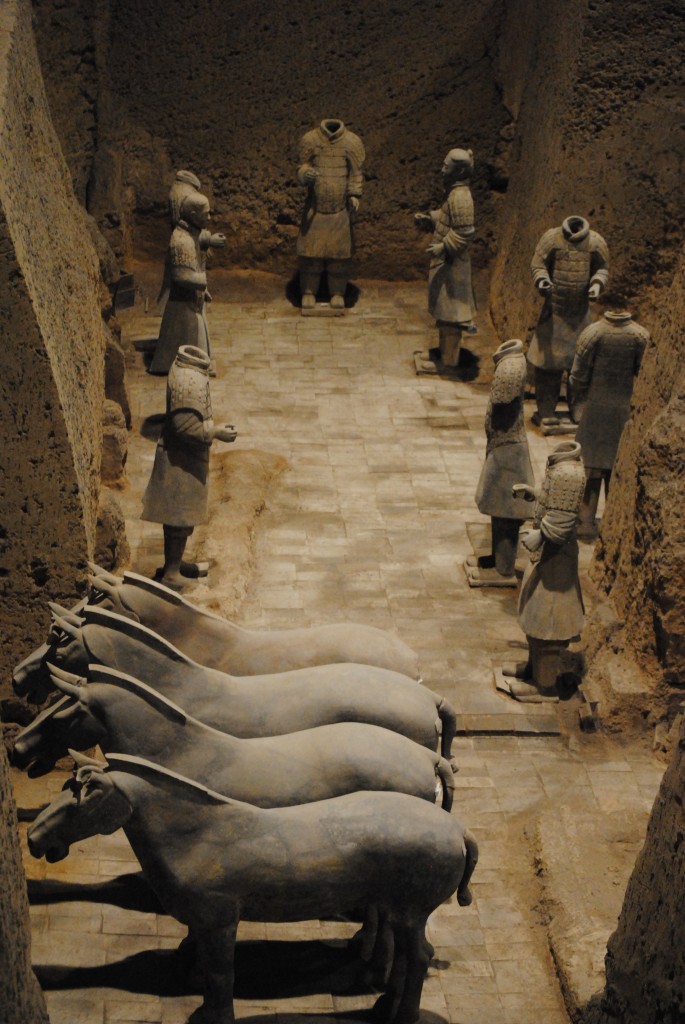Trip planning is an incredibly insightful endeavor. Do you want to visit India, a country of 1 billion people with a land mass equivalent to 1/3 of the U.S., just to see its most famous icon the Taj Mahal? Do you want to see Thailand solely because you love Thai food? Does Japan remind you of elementary school history classes; Hong Kong a movie you loved as a teenager? Did you see pictures of the Swiss Alps and decide it would be the most beautiful thing in the world to see? And then when you finally make it to that place, was the experience what you expected it to be? Do you wish you had made your decisions differently?
China was one of the places we visited where I had very high expectations for certain sites I wanted to see, but very vague expectations for what the actual experience would be like. Fellow travelers we encountered in Southeast Asia told us that China was a dirty, chaotic place where people had such disregard for common convention that they allowed their children to poop in the middle of the sidewalk or on a train car. On the other hand, my father visits China several times a year and talks about what a wonderful, cosmopolitan place it is.
These conflicting perceptions of China made us waver for much of the trip about whether we actually wanted to go. You may recall us walking to Chinese border while we were in Laos, thinking that gazing at it from afar would be the closest we would ever get to it on this trip. Here is a brief refresher:

After extensive debate throughout our time in Southeast Asia we finally decided to add it to our itinerary. Due to its incredible size and status as an emerging world power, it felt like there would be a glaring gap in our experience and understanding of Asia if we skipped it. My Dad was also coincidentally planning to be there which would make the experience much easier. Most importantly, however, we needed to go to China so I could fulfill my lifelong(ish) goal of seeing the Terracotta Army in Xian.
One of the greatest archaeological finds of recent history, the Terracotta Army is part of a vast necropolis built for the first emperor of China. Paranoid about being left defenseless and bored in the afterlife, Emperor Qin was buried with clay reproductions of a vast, battle-ready army–complete with horses, chariots, and weapons–as well as an elaborate palace filled with treasure; acrobats, musicians, and other entertainers; and a zoo for exotic animals. When I learned about this incredible tomb in my Asian History class my Junior year of high school, I fantasized about one day seeing it myself.
What I didn’t realize when I was gazing in awe at the map of the entire necropolis from my classroom desk, is that only a very small portion has been excavated and it is primarily the army portion of the tomb that is visible. There are three main excavation sites housed inside of buildings, giving the place a museum feel.
A 5-minute tram ride takes you to the rest of the site that very few tourists actually choose to venture–the Qin ShiHuang Mausoleum. The reason so few people travel here is because it contains the rest of the completely unexcavated necropolis, including the actual burial site of Emperor Qin. Only a few small portions of Emperor Qin’s tomb have been excavated, because they are waiting until the technology is developed to unearth the contents of the tomb without destroying anything. Although it was disappointing to realize that this will be a much more complete and interesting place to visit in the future, I respect the decision to wait until it can be done properly. It also keeps the crowds away which made it quite peaceful to walk around.

While trying to figure out what else we could do in Xian, I had a fantasy that we might be able to see some mountains or do a hike somewhere nearby. I was really excited to find that Huashan Mountain, one of China’s Five Greatest Mountains (i.e. the most renowned mountains in Chinese history) was only an hour away by train. I was less excited to learn that it is also home to one of the world’s most dangerous hikes, the Plank Walk.
Articles such as this one are rampant on the internet and scared the living daylights out of us. Even though we could still hike around the mountains without doing the Plank Walk, we felt incredibly conflicted about going to Huashan Mountain. Brian articulated this conflict very eloquently while we were sitting in our hotel room in Xian the first night we arrived: “I don’t want to go, because I know if we go I’ll want to do it. And I don’t want to die.”
We finally made our decision by asking ourselves the question that decided many things for us on this trip: How much will we regret not doing this? The answer: Tons, especially if we choose not to do this based on fear.
And boy am I glad we decided to do it. The mountains of Huashan are unlike anything I’ve ever seen before, and rival the Swiss alps in a uniquely beautiful way.


Not only did we appreciate the beauty of being on Huashan mountain, but we faced our fears and decided to do the dreaded plank walk after all. The funny thing is that it wasn’t even remotely scary once we were actually doing it. We were strapped in with a harness, and although we were on a very narrow platform thousands of feet above the ground, the views are so breathtaking that it didn’t even bother us.

I started this post out talking about travel expectations, because Xian was the most extreme representation of the biggest lesson we learned on this trip: Places you visit almost never meet your expectation of them. This works in both positive and negative ways. The place that I was looking forward to the most–and one of the primary reasons we even came to China to begin with–was disappointingly not how I envisioned, while the place we decided to go to on a whim and that we were initially terrified to do was one of the biggest highlights on the entire trip. It also sometimes turns out that the things that you are eagerly anticipating exceed your expectations–the Taj Mahal was the most incredible piece of architecture I’ve ever seen in my life; Angkor Wat, larger and more intricate than I could have even fathomed.
My biggest take away from this trip that will guide my future travel decisions is to travel to more places that I don’t necessarily have a clear reason for wanting to go. This doesn’t mean I don’t ever again want to visit significant tourist destinations –I still have pretty high on my list of things to see: the Pyramids of Giza, the Parthenon, and the Berlin Wall–it just means I will make a conscious effort to mix those types of trips with destinations for which I have very few expectations.
















